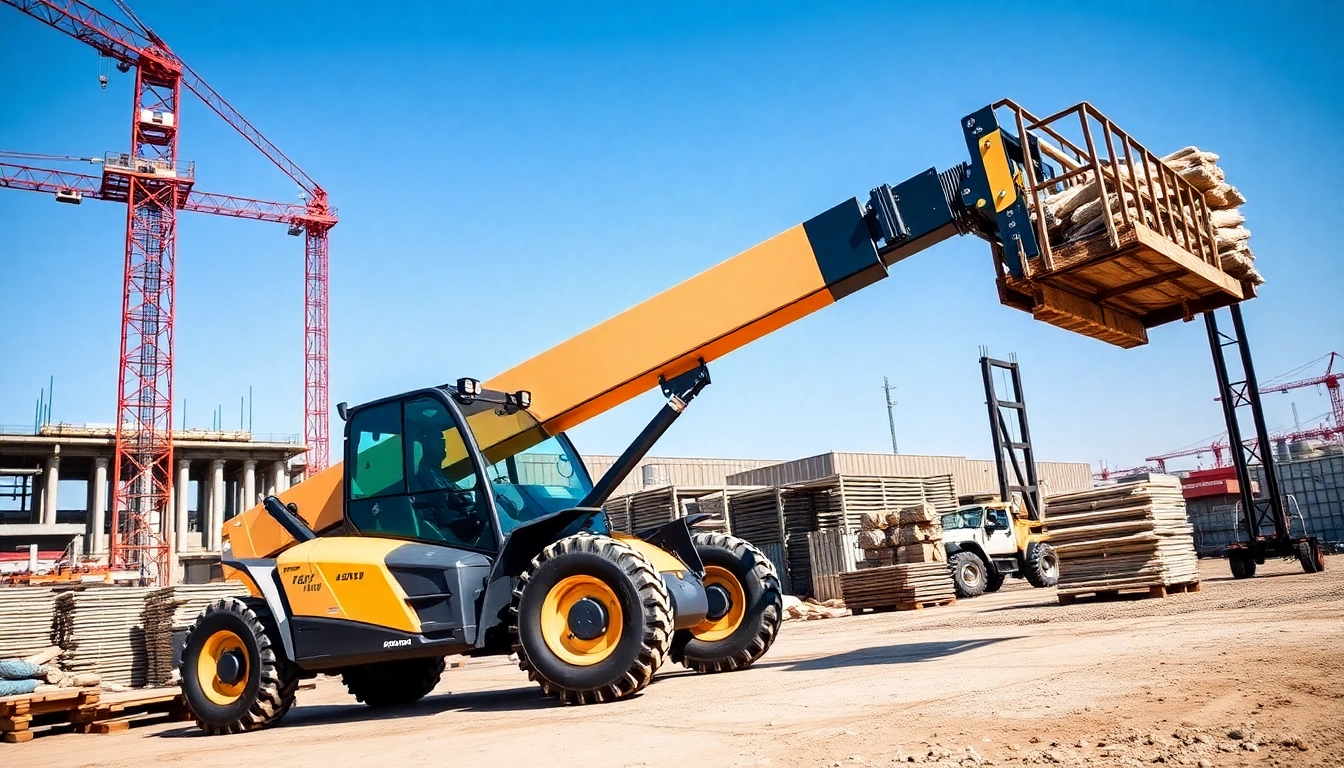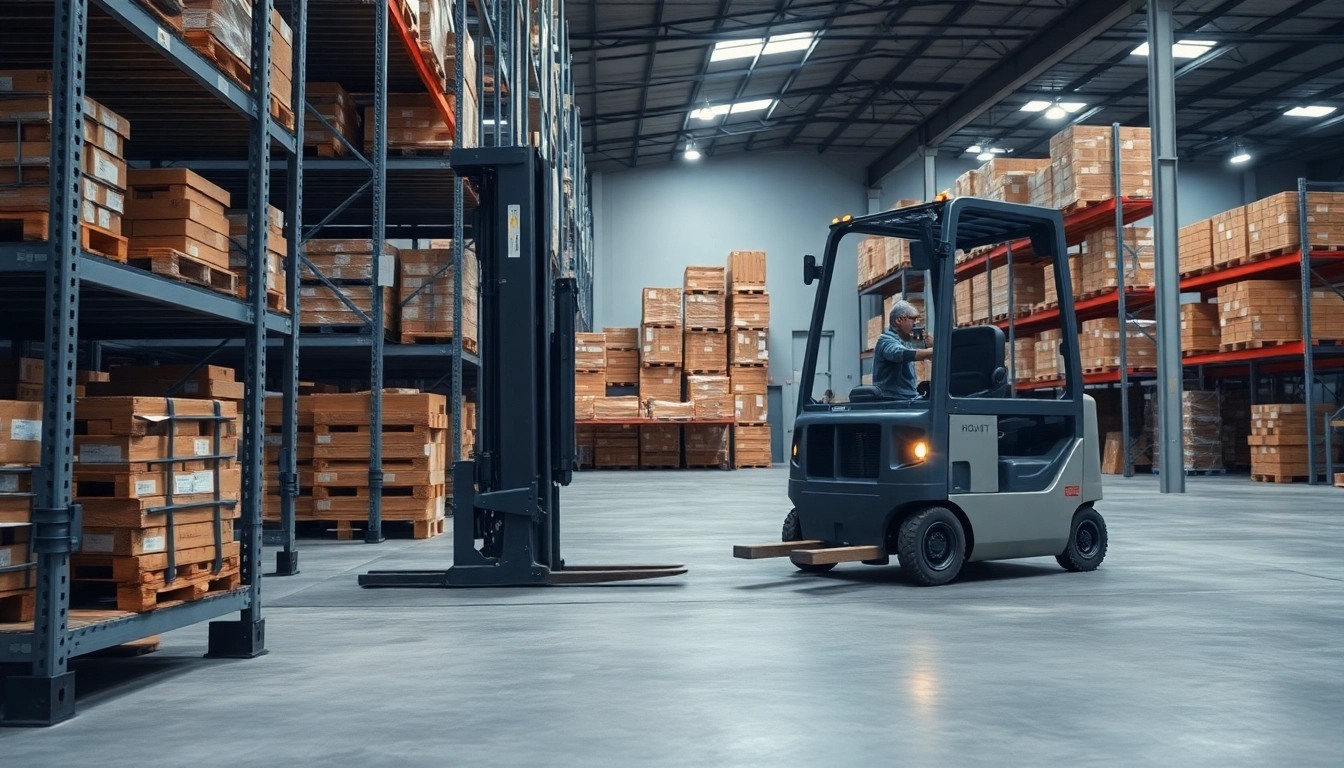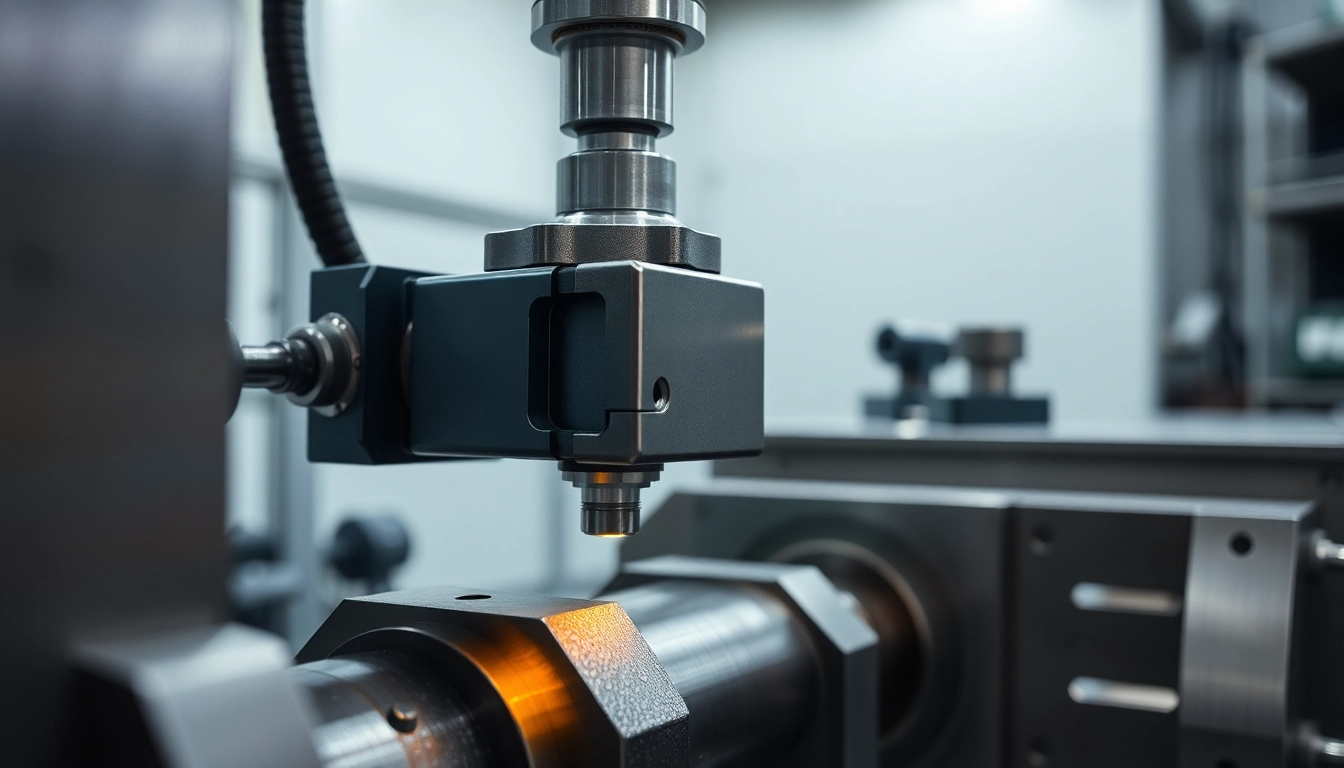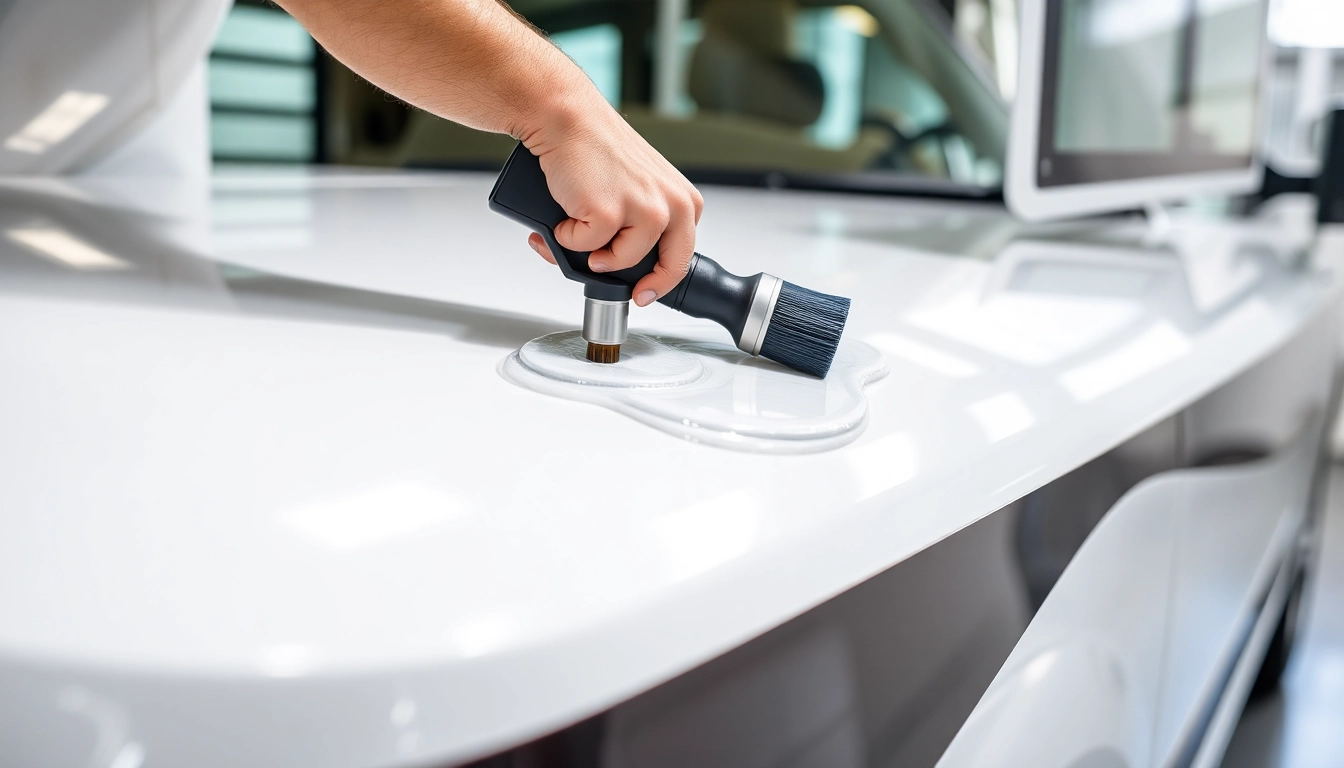Understanding Telehandler Rental: Key Benefits and Uses
In the dynamic landscape of construction, agriculture, and industrial operations, equipment flexibility and efficiency are paramount. Among the essential machinery in these sectors, telehandlers—also known as telescopic handlers—stand out as versatile and indispensable. For many businesses, especially those seeking cost-effective solutions without sacrificing capability, telehandler rental offers a practical alternative to purchasing equipment outright. Renting enables access to a broad range of models tailored to specific project needs, thereby optimizing productivity and controlling budgets.
What Is a Telehandler and Why Rent?
A telehandler is a type of heavy machinery combining the features of a forklift and a crane, mounted on a telescopic boom that can extend forwards and upwards. This design allows operators to perform lifting, placing, and material handling tasks at various heights and distances, often in confined or challenging environments. Telehandlers are equipped with different attachments—such as forks, buckets, or winches—further enhancing their versatility.
The decision to rent a telehandler instead of purchasing hinges on several benefits. Primarily, rental offers access to the latest models equipped with advanced safety features, emission controls, and technological innovations, without the long-term financial commitment. It also provides operational flexibility, allowing companies to scale their equipment needs based on project scope and timelines. Furthermore, rental companies typically include maintenance and support, reducing downtime and ensuring safety compliance.
For businesses seeking reliable, versatile machinery without the risks associated with ownership, telehandler rental is a strategic choice, particularly in the UK when considering the diverse demands of the construction and industrial sectors.
Common Applications in Construction and Industry
Telehandlers are integral to numerous applications across construction, agriculture, recycling, and industrial sectors. Their adaptability makes them suitable for varied tasks, including:
- Construction Sites: Lifting heavy materials such as steel beams, concrete blocks, and pallets of bricks to elevated levels, especially in multi-storey builds.
- Warehouse and Logistics: Loading and unloading goods, stacking pallets, and moving bulky items within confined spaces.
- Agricultural Operations: Handling feed, hay bales, and other farm supplies, often in rough terrain or uneven fields.
- Industrial Maintenance and Repairs: Accessing elevated areas for maintenance work or installation of equipment.
- Event and Modern Setup: Transporting large-stage components, banners, or technical equipment in event spaces and outdoor venues.
Case studies reveal that companies utilizing telehandlers experience increased efficiency, as the equipment enables multi-directional handling and reduces the need for multiple machines. For example, a UK-based construction firm reported a 20% reduction in material handling time when deploying telehandlers for their projects, highlighting their impact on overall productivity.
Advantages of Renting Vs. Buying Equipment
Choosing between renting and buying telehandlers depends on project duration, budget, and operational flexibility. Here are key advantages of opting for rental:
Cost-Effectiveness and Budget Management
Rental eliminates large upfront capital expenditure. Instead, businesses pay based on usage, which helps manage cash flow, especially for short-term projects.
Access to the Latest Technologies
Rental companies frequently update their fleets with new models offering improved fuel efficiency, safety, and productivity features, keeping operators at the forefront of industry standards.
Maintenance and Support
Rental agreements typically include maintenance, repairs, and technical support, reducing downtime and operational risk.
Flexibility and Scalability
Depending on project demands, companies can easily increase or decrease equipment fleet size without the sunk costs of ownership.
Reduced Depreciation and Storage Issues
Owning equipment entails depreciation and storage costs. Rental shifts these responsibilities to the rental provider, optimizing resource allocation.
However, some businesses with ongoing requirements might find ownership more economical long-term. Nonetheless, for most temporary or variable projects, renting provides superior flexibility and cost control.
Choosing the Right Telehandler for Your Project
Factors to Consider: Height, Load Capacity, Reach
Selection begins with clearly defining project-specific parameters. Key considerations include:
- Lifting Height: Determine the maximum height materials need to be moved. For multi-storey buildings, models with 20m or more reach may be necessary.
- Load Capacity: Know the maximum weight the telehandler will handle to ensure safety and efficiency. Overspecifying can incur unnecessary costs, while underspecifying risks operational failure.
- Horizontal Reach: Assess the reach required to place materials at specific distances from the machine’s base, especially in confined spaces or uneven terrain.
- Terrain Type: Consider whether the site involves rough, muddy, or uneven ground; select telehandlers with appropriate tire types and chassis configurations.
- Accessibility: Evaluate space constraints to ensure the chosen model can operate effectively within the site layout.
Different Types of Telehandlers and Their Features
Telehandlers come in various configurations tailored to specific needs:
- Compact Telehandlers: Small footprint, ideal for tight spaces, with lifting heights up to 4-6m.
- Standard Telehandlers: Versatile models with heights ranging from 6m to 20m, suitable for most construction and industrial applications.
- Heavy-Duty Telehandlers: Designed for large loads and high reaches, often exceeding 20m, used in large-scale infrastructure projects.
- Specialized Variants: Models with extendable reach, side-mounted booms, or off-road adaptations for specific environments.
Selecting the Best Rental Provider in the UK
Choosing a reputable rental partner involves assessing several factors:
- Fleet Quality and Range: Ensure access to a variety of models and recent equipment upgrades.
- Availability and Lead Time: Confirm prompt delivery and pick-up services to align with project schedules.
- Pricing and Rental Terms: Compare rates, inclusions, and flexibility in rental durations.
- Support and Maintenance Services: A provider offering on-call support minimizes operational interruptions.
- Safety Record and Certifications: Verify equipment complies with UK safety standards and undergoes regular safety inspections.
How to Optimize Your Telehandler Rental Experience
Booking Tips and Lead Time
Advanced planning is crucial. Reserve equipment at least 1-2 weeks before the scheduled start date, especially during peak seasons. Confirm delivery and pickup arrangements, and communicate any site-specific requirements or restrictions to prevent delays.
Operational Best Practices for Safety and Efficiency
- Ensure operators are trained and certified in telehandler operation, familiar with machine controls, safety features, and emergency procedures.
- Conduct pre-operation inspections, including checking fluid levels, tires, attachments, and safety devices.
- Follow manufacturer guidelines for load capacities and proper attachment use.
- Use spotters in confined or complex environments.
- Maintain clear communication protocols with ground personnel.
Cost-Saving Strategies and Rental Rate Insights
Compare daily, weekly, and monthly rates to identify the most economical rental periods. Some providers offer discounts for longer-term hires or bundled packages. Combining equipment rentals with operator services can further streamline project logistics and optimize costs.
Maximizing Your Investment: Maintenance and Usage Tips
Routine Safety Checks and Inspection
Implement daily inspection routines covering brakes, tires, hydraulics, lights, and safety features. Keep detailed maintenance logs and schedule periodic professional servicing in line with manufacturer recommendations.
Proper Handling and Storage
Operate within the certified load limits and avoid abrupt maneuvers that could damage the machine. Store telehandlers on stable ground, protected from weather when not in use, and disconnect batteries if left idle for extended periods.
Performance Metrics to Track Rental Effectiveness
- Utilization rates to assess productivity gains.
- Downtime incidents and causes.
- Operational costs versus project savings.
- Safety compliance and incident reports.
- Return on investment over project duration.
Future Trends in Telehandler Rental and Industry Innovations
Technological Advancements in Telehandlers
Emerging features include electric and hybrid powertrains, GPS and telematics for fleet management, and automation capabilities increasing precision and safety. These innovations are driving productivity and environmental responsibility.
Environmental Considerations and Sustainable Rentals
Growing demand for low-emission equipment encourages rental providers to expand electric and hybrid telehandler fleets. Sustainability policies not only reduce carbon footprints but also align with UK regulations and corporate social responsibility goals.
Predicted Market Growth and Opportunities in the UK
Analysts forecast continued growth in telehandler rental due to infrastructure expansion, regeneration projects, and increased emphasis on flexible, cost-effective machinery solutions. Companies that adapt to technological and environmental trends will maintain competitive advantages, offering expanded services such as remote operation and AI-assisted safety systems.






